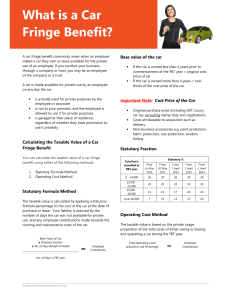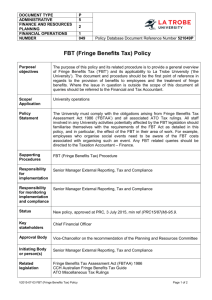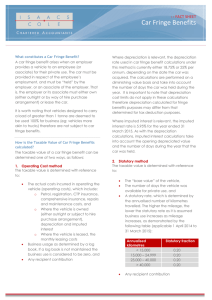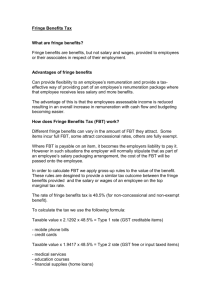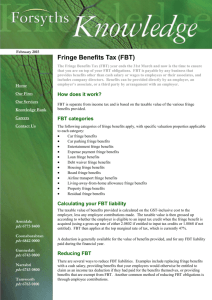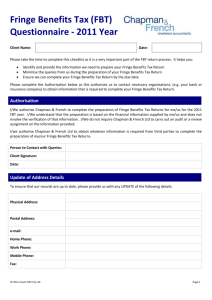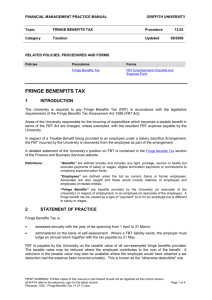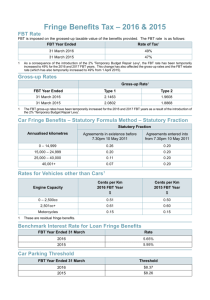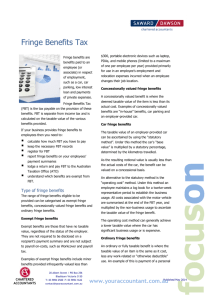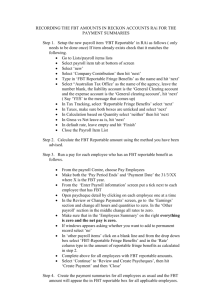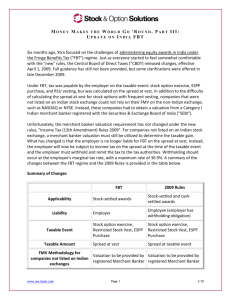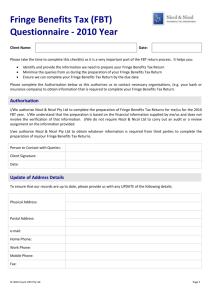Fringe Benefits Tax
advertisement
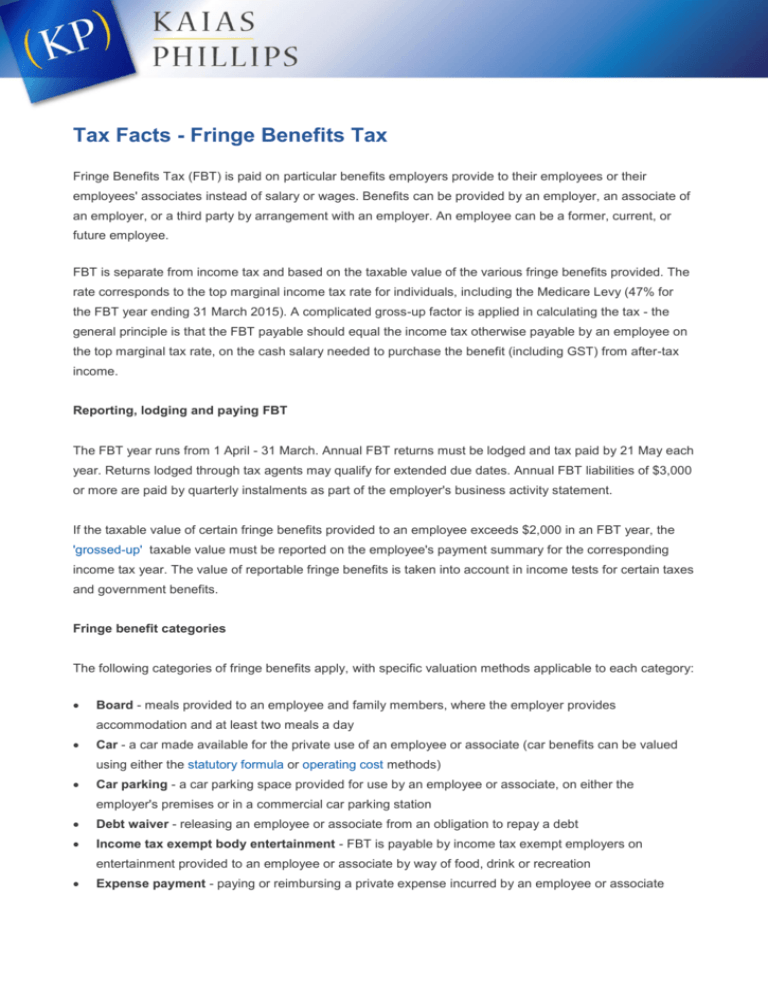
Tax Facts - Fringe Benefits Tax Fringe Benefits Tax (FBT) is paid on particular benefits employers provide to their employees or their employees' associates instead of salary or wages. Benefits can be provided by an employer, an associate of an employer, or a third party by arrangement with an employer. An employee can be a former, current, or future employee. FBT is separate from income tax and based on the taxable value of the various fringe benefits provided. The rate corresponds to the top marginal income tax rate for individuals, including the Medicare Levy (47% for the FBT year ending 31 March 2015). A complicated gross-up factor is applied in calculating the tax - the general principle is that the FBT payable should equal the income tax otherwise payable by an employee on the top marginal tax rate, on the cash salary needed to purchase the benefit (including GST) from after-tax income. Reporting, lodging and paying FBT The FBT year runs from 1 April - 31 March. Annual FBT returns must be lodged and tax paid by 21 May each year. Returns lodged through tax agents may qualify for extended due dates. Annual FBT liabilities of $3,000 or more are paid by quarterly instalments as part of the employer's business activity statement. If the taxable value of certain fringe benefits provided to an employee exceeds $2,000 in an FBT year, the 'grossed-up' taxable value must be reported on the employee's payment summary for the corresponding income tax year. The value of reportable fringe benefits is taken into account in income tests for certain taxes and government benefits. Fringe benefit categories The following categories of fringe benefits apply, with specific valuation methods applicable to each category: Board - meals provided to an employee and family members, where the employer provides accommodation and at least two meals a day Car - a car made available for the private use of an employee or associate (car benefits can be valued using either the statutory formula or operating cost methods) Car parking - a car parking space provided for use by an employee or associate, on either the employer's premises or in a commercial car parking station Debt waiver - releasing an employee or associate from an obligation to repay a debt Income tax exempt body entertainment - FBT is payable by income tax exempt employers on entertainment provided to an employee or associate by way of food, drink or recreation Expense payment - paying or reimbursing a private expense incurred by an employee or associate Housing - accommodation provided that is an employee's or associate's usual place of residence Living-away-from-home allowance - a cash allowance paid to compensate an employee for increased costs, because the employee's duties require them to live away from their usual place of residence Loan - a loan provided to an employee or associate either interest-free or at a discounted interest rate Meal entertainment - entertainment provided by taxable employers by way of meals to an employee or associate Property - goods provided to employees either free or at a discounted price Residual - any fringe benefit (as defined) that does not fall into one of the specific categories MORE: See the ATO web site for more on FBT categories. Exemptions, concessions and special rules A wide range of exemptions and reductions in taxable value apply. Concessional valuation rules apply to 'in-house' fringe benefits. Benefits provided as part of a salary packaging arrangement do not qualify for the concessional treatment. The taxable value of certain fringe benefits can be reduced by employee contributions towards the cost of the benefit. Making such contributions can result in a lower overall tax liability, depending on the particular employee's tax situation and the valuation method that applies to each benefit received.
